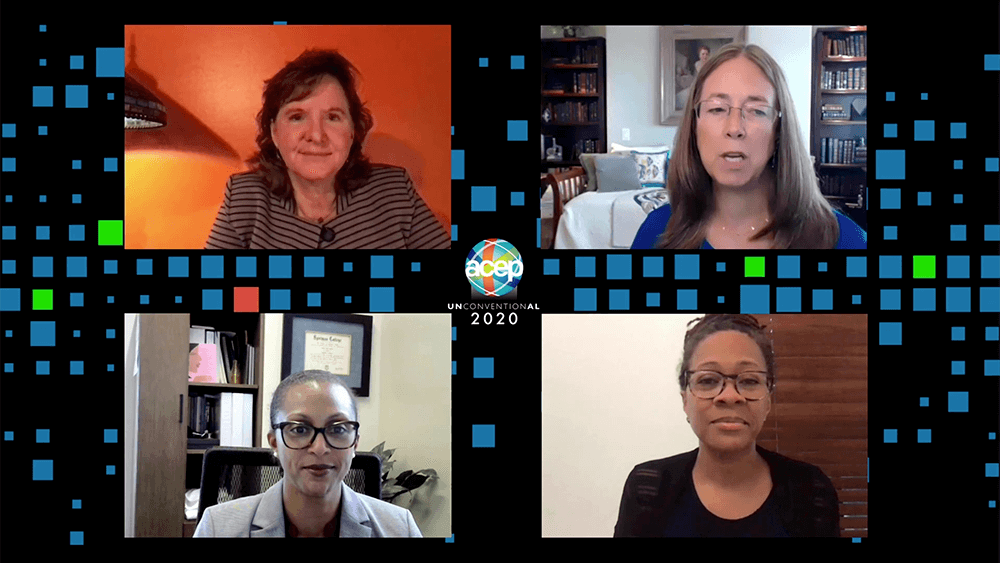
For its 2020 Unconventional all-virtual event, the American College of Emergency Physicians (ACEP) offered a mix of live and on-demand sessions as well as opportunities for participants to interact informally.
One of the pandemic’s biggest meme hits has been to pick your quarantine house: Which house of dead authors would you like to be quarantined with? Would you rather quarantine at a mountain cabin drinking wine while binge-watching a TV series or at a seaside cottage, barbecuing and going for long walks on the beach?
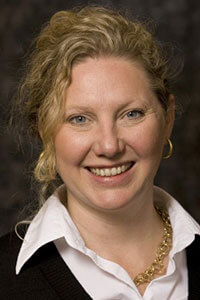
Michele Byers
The American College of Emergency Physicians (ACEP) took a page from that pandemic diversion in its program for its 2020 Unconventional all-virtual event, held Oct. 26–29. Participants could pick from their favorite mix of vacation spots, drinks, music, and more in a video chat Quarantine Room during dedicated times each day in the program and strike up conversations with kindred spirits.
“We had several guiding principles for the meeting,” said Michele Byers, CAE, CMP, DES, ACEP’s managing director of education and management services. In addition to providing quality education and the latest science and research, ACEP wanted to offer “those serendipitous hallway moments that you usually have in a live meeting,” she said. “We wanted to try to capture that and make those available, so we did a lot of social events, including Quarantine Rooms.”
Convene recently Zoom chatted with Byers and Loren Rives, senior manager of academic affairs, to learn how ACEP successfully wove together education and chance encounters at its first virtual annual meeting, which attracted 8,500 participants — on par, Byers said, with its typical in-person attendance. Attendees can access on-demand content for 90 days following the October event.
One of the changes we’ve seen with virtual scientific and medical events is that the platform offers more opportunities for engagement with abstract presentations. Was that true for ACEP20?
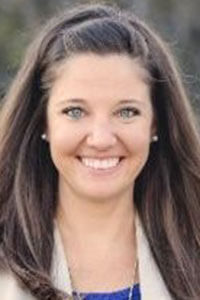
Loren Rives
Rives: Yes. One of the features of the scientific assembly is our research forum. At one time it was its own separate conference, but over the past few years, we’ve integrated it into the actual conference itself. We’ve seen a lot of success there, making pathways between the two, the didactics/education side and then the research side.
When we’re meeting in person, we have a lot of different rooms where everything’s going on simultaneously. What we decided to do this year is to offer a number of abstract presentations on demand. we took about 30 percent of them and made them live and simulive offerings that we did as actual events throughout the week. People could go attend the live sessions, but then at any point in time, they could also pop over and visit some of those on-demand presentations, as well. Having so much content on demand and available anytime you wanted, was really nice for people to check things out and then pop over to another education session or a Quarantine Room and get to see a little bit of everything.
When we’re live on site, we have people scheduled into about seven to eight abstracts per hour. Then we have those scheduled on the hour throughout the week. But knowing people’s attention spans are sometimes shorter with online events, we shortened it to 30 minutes instead of an hour, and we cut it down to four abstracts. So, we did those about every 30 minutes throughout the week. And then for those that were on-demand, we had the people pre-record their content and then they had about seven minutes each to do their presentation. We worked with Wisdom Capture to get those edited, cleaned up, and nicely done because for a lot of people, this was their first time recording themselves.
There was a lot of communication, a lot of hands-on training that we had to do in order to get everyone prepared and up to that point. We took all that prerecorded content and then each individual presentation lived within the library — I liken it a little bit to YouTube in terms of what it looked like, but when you clicked on that presentation, it took you to its own individual page with a comment box where people could leave comments. We had a little thumbs-up icon for people to click on to “like” the presentations. And then it also had the image of the presenter as well so people could click on that and see who the presenter was and connect with them that way, as well.
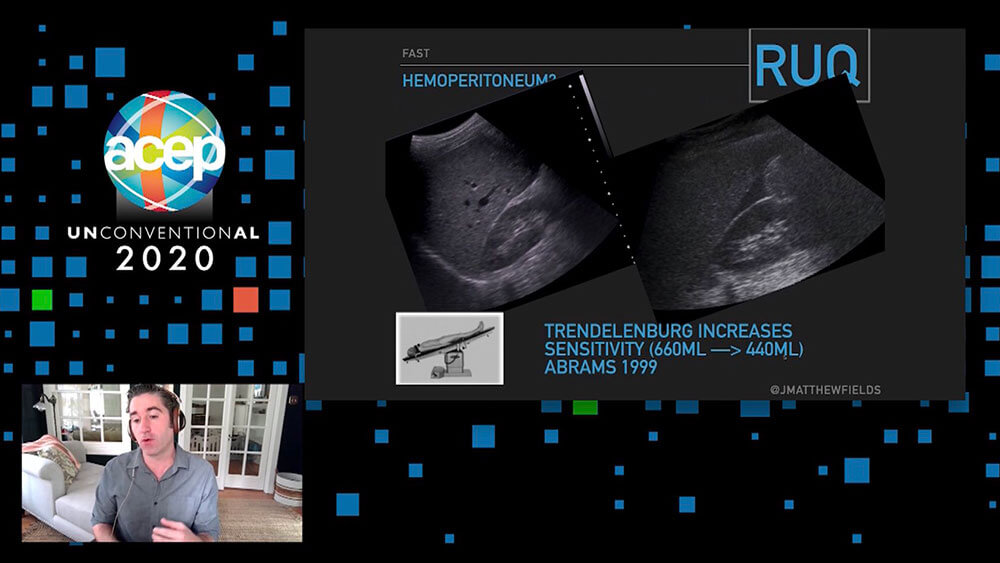
For the virtual event, four abstracts were presented in 30-minute chunks (instead of seven in an hour) because people’s attention spans are sometimes shorter with online events.
Was there an opportunity for them to ask questions of the presenter? Was that live or did attendees type in their questions and then the presenter responded afterwards?
Rives: For the on-demand content, questions could be left in comment boxes found on each presentation. We told the presenters to check back there to see who was asking questions and interacting. And then one feature in the platform was individual chat rooms where people could go in and set up their own chats. we encouraged people to seek those opportunities out and follow up with people who were leaving questions. For the live sessions that we did, we had four presenters scheduled for every 30 minutes, everyone had prerecorded a five-minute presentation, which we had worked with Wisdom Capture to edit into a single video.
When it came time for the live event, we had everyone check in to the session early. Let’s say a presentation is at 10:00 a.m., everyone signed in about 10 minutes before, we automatically queued up that prerecorded content and we played the video. We also assigned moderators to each of those sessions, who were responsible for keeping an eye on the chat box and the Q&A and being cognizant of what was coming in. Also, just in case people were shy or quiet, they had some questions prepared in advance.
Were the moderators staff members or volunteers?
Rives: They were volunteers from the research committee. We have a really strong research committee whose members are super engaged with the research forum. They’ve done this for years, so it’s great to have their experience. So, we played those four videos (each five minutes) for a total of about 20 minutes. That last 10 minutes was live Q&A. The participants all came up on screen, all four of them, plus the moderator. Then they would answer questions that came in through the chats and the comment box.
Did they have to sign up for these sessions? Were only a limited number able to participate?
Rives: No, and that’s what was phenomenal. In the past, when we’re on site, we have five physical rooms and usually people are running to try and catch their resident and maybe their other resident is across the hallway presenting at the same time, so they’re running in and out trying to see everyone. It was nice because they could come to this and maybe their other resident had on-demand content. They weren’t trying to run from one room to the other. And instead of having those five rooms, we essentially had a single virtual room. We didn’t have as many people trying to spread themselves thin trying to see everything.
Byers: We used a very similar process with the didactic portion, our general education courses. I think that was a real success — the ability for people to watch the pre-recorded content, and then immediately after to see the presenter live on the screen to take your question. So it really was, simulive — it wasn’t all prerecorded, it wasn’t all live. It was the combination of both. And more people than we had anticipated participated in Q&A — I think [the ability to ask questions virtually] brought out some people who might not raise their hand in a live meeting or people who wouldn’t go up to the speaker afterwards. They would type their questions in the Q&A box, feeding them to the moderator and the presenter.
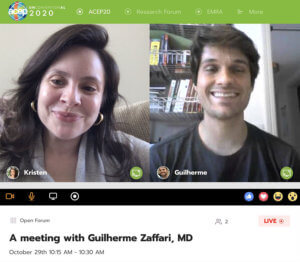
ACEP20 planners created multiple ways for individuals to communicate with each other. (Kristen Kayser Twitter)
ACEP had several opportunities to connect via social activities, including private video chat rooms, a 24-hour coffee lounge, roundtables, and the Quarantine Rooms. Can you tell us how they were received?
Byers: I’ll be honest, I was skeptical about the Quarantine Rooms at first, but I said, “Okay, let’s try it. What do we have to lose?” We had five of those rooms and we ran them a couple of times each day. We ran them in the morning and again in the evening. They were super popular. People loved it. One of the social activities was a storytelling event, just an unstructured time for people to get together and share experiences. Some of our participants were first-time attendees. When they popped into this storytelling event, the president of the association was there with a glass of wine and they were in awe that the leadership was there with them, just one of their own.
They really felt like they made these great connections. That was one of our goals, and we were so excited that it worked. It was like a Zoom call, but within the platform. So they didn’t have to pop off and go to a Zoom meeting. They could stay within the Juno platform. They were a lot of fun and people asked, “How do we keep this? We want to do this all year long.”
So that’s our takeaway: How do we replicate that experience when there’s not a bigger activity around it? It’s a challenge, but we’ll figure it out. One of our guiding principles was to be able to offer elements of surprise and delight. We wanted people to come to the meeting and find something they didn’t expect. And we heard that over and over again, that ACEP20 far exceeded expectations and they really loved that, even though we were apart, we could still be together and connect.
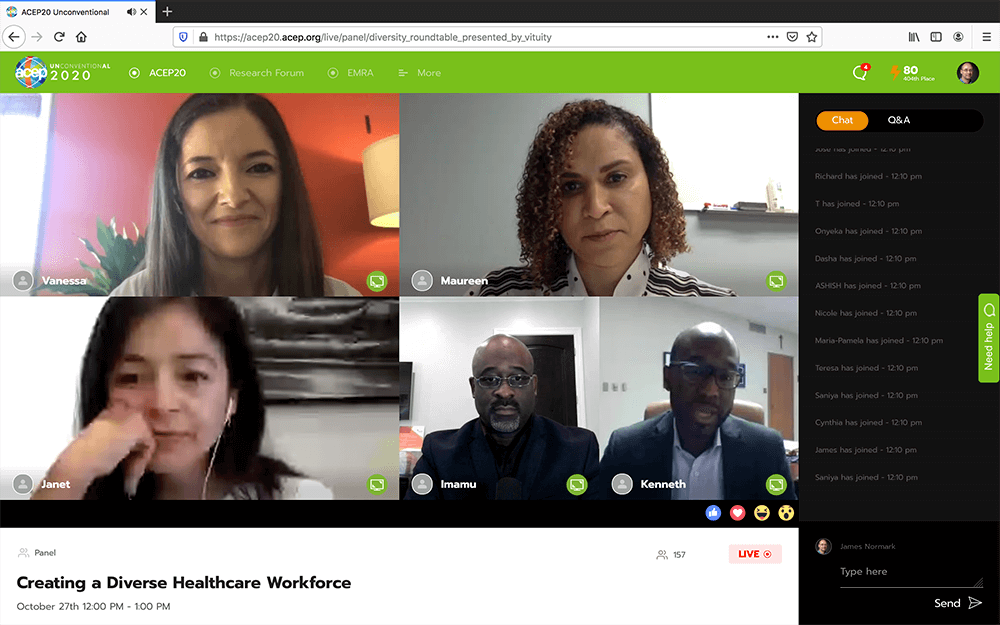
Roundtables, like the “Creating a Diverse Healthcare Workforce” one, created opportunities for connection through chat rooms.
How did you handle video production?
Byers: Most of the videos were done with Wisdom Capture using the presenter’s own equipment. We did assessments beforehand to make sure that the speakers had the right lighting and equipment and knew how to use the camera and microphone, all those things. For some of our main stage sessions and our larger education program events, we had a virtual studio and we worked with a different production company, Pixl Productions out of Dallas. We separated out the work for those main stage sessions and simulive courses with Pixl. The majority of the prerecorded content was with Wisdom Capture.
It was important to us to invest in that production support because we wanted it to look professional. And we had told our members, this is not going to be your typical Zoom meeting. This is not just going to be a course capture where you see somebody’s slides and you hear them talking. And so we have intros and outros, we have all of the thematic graphics around it, so that all have consistent look and feel. And the production companies really helped us with that.
They were really supportive. Whenever there was a bad edit, when they got something that wasn’t up to standards, they would coach the speakers and the presenters and work with them directly to make sure that we got to a good final product. And that was hundreds and hundreds of presenters. And some of them got very complex on the education side because we had panels of speakers. We didn’t want to just splice together four different people talking at different times. So that’s when we would use the virtual production studios to bring everybody in together so that the panels looked more cohesive.
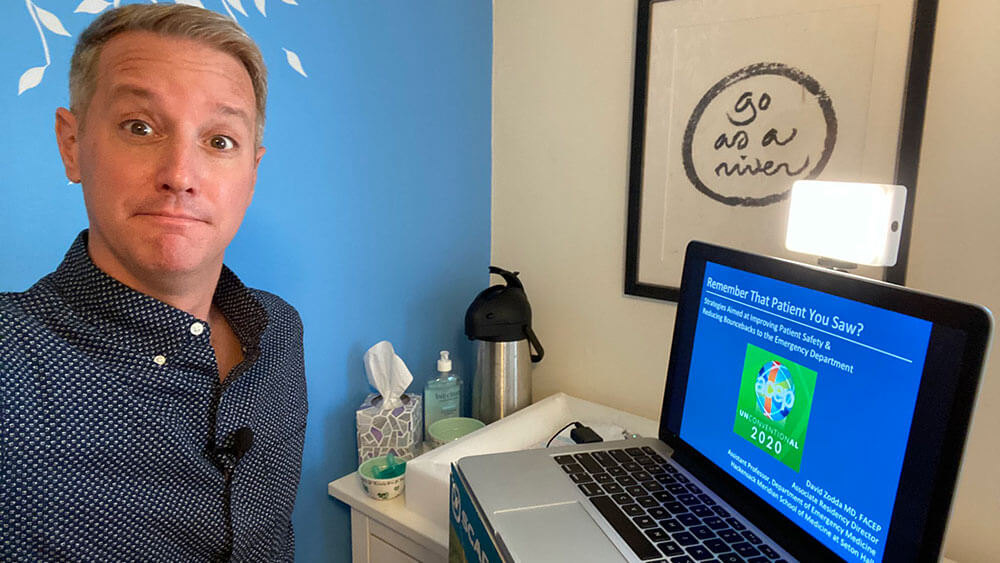
ACEP20 speaker Dr. David Zodda prepares to record his virtual presentation for the event. ACEP planners worked with speakers to make sure their lighting and equipment were good. (David Zodda’s Twitter)
How did you price the event?
Byers: We greatly simplified our registration categories. In a typical year we would have, I’m not kidding you, 19 to 20 different categories — member or non-member, resident, medical student, international, faculty presenter, research forum presenter, etc. You could buy a one-day pass, you could buy a half-day pass. It was very complicated. We really simplified it — we had a non-member, member international/resident. And then we learned a little bit later that we really wanted to further define our international category according to the World Bank classification of countries by income.
We identified countries by lower income, lower-middle income, middle and high income, and really reduced our pricing for those lower- and middle-income countries. Registration was $595 for non-members, $495 for members and $395 for residents in high-income international countries. Registrants from lower-income countries paid $25.
Did you attract more of a global audience because it was virtual or do you typically get a lot of people from different countries attending the event?
Byers: We do generally have a pretty good international attendance, but we did see more this year — there weren’t any travel barriers, no visas. The main challenge was making sure that they had the capability and the broadband to play the videos. But we were also mindful of those time-zone differences. Emergency physicians don’t keep office hours; they work shifts 24/7. So we offered education in three-hour blocks, from 8 to 11 in the morning, and then again from 4 p.m. to 6 p.m. And then, we offered sessions from 9 p.m. to 11 p.m., and it was exhilarating to see 600 people pile into a 10:30 p.m. education session, all the nocturnists came out and they loved it. They were so grateful. Some of them, the moms and the dads, had put their kids to bed and they were able to sit down and focus. So that’s another thing that we are really looking at is how can we make sure that we’re delivering education and activities on their time wherever they are.
Will digital be part of your annual event even post-pandemic?
Byers: Oh, absolutely. We’ve already talked about how we can expand our virtual offerings. We know that it’s going to be part of our event portfolio going forward and it should be. It was a tremendous success and our members appreciated it. We learned so much. It fulfills our mission, which is to advance emergency care and to do that, we have to get in front of those people who need that content, need that education, and frankly need that community to support one another, especially in difficult times, like they’re seeing on the front lines with COVID. And so we have every intention of keeping an element of hybrid at least, and probably expanding our virtual events also.
Did this give you an opportunity to be more creative in your role?
Rives: It was definitely a chance for us to be creative. I think for a lot of our team, we started with the idea of we’re not confined to these four walls anymore, so what can we do? I give a lot of credit to our leadership, to our members that really asked us to think big and think hard. They then partnered with us to create something amazing and really get their hands dirty and learn new skills, explore new options, try new things, and were brave. Some things we really stepped out on faith. We tried things that were new.
Byers: I would agree. One of the areas where we were really most creative, was not just that we put together some fun activities and events, but the way we worked. It was a much more cross-departmental effort this year and everyone stepped in. We were really creative in how we worked together as a team. I think that’s going to have a long-lasting impact on a number of fronts across the College and how we continue to move big projects and big initiatives forward.
Rives: We also had to get creative in terms of how we try to keep our members’ wellness at the forefront. Making sure that we included pieces in the virtual program that were restful and restorative was just as important for us to focus on, in addition to all the education and the research. That is really important for emergency docs.
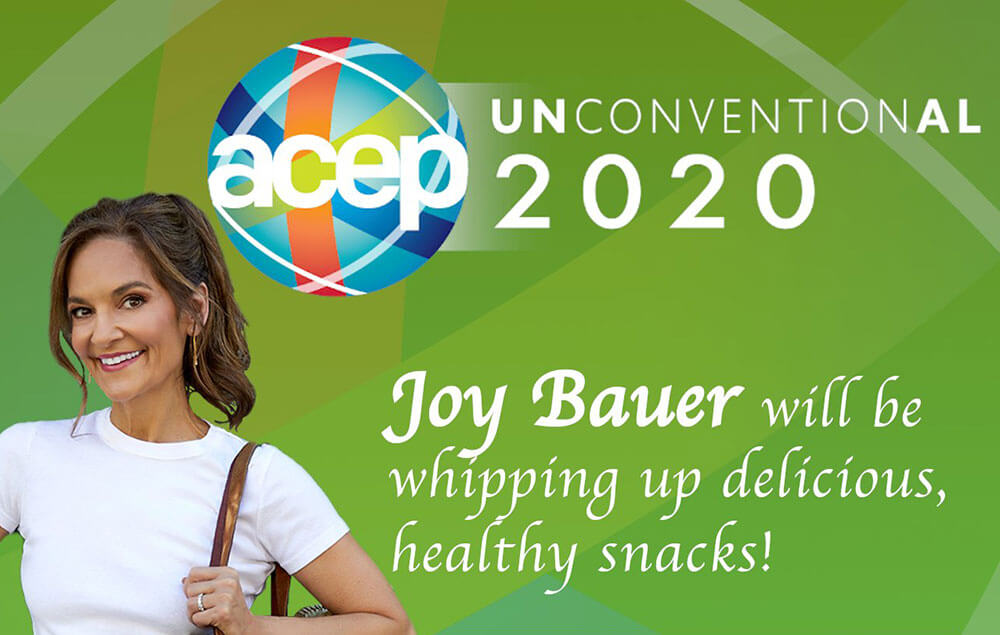
Organizers of ACEP’s virtual event put participant wellness at the forefront, with activities that included health cooking classes by nutritionist Joy Bauer.
How did you accomplish that virtually?
Rives: The Quarantine Rooms were one. We had a puppy and a penguin livestream that people could check.
Byers: We had yoga and healthy cooking demos — not just for the registrants, but for them to help share with their patients too. When you have five minutes with a patient to counsel them on better eating habits, what can you do in that amount of time? We focused on their personal wellness, but also changes and opportunities within the systems that they work in.
What else contributed to the event’s success?
Byers: You asked about being creative. this was a leap of faith for us. We looked at all the usual players that are out there and we really liked what we saw with Juno and that they were not your traditional platform. Their platform was a pretty wide-open landscape for us to work with. We were excited to be able to really customize our features and how we wanted to deliver programming. They were an incredible team to work with. I don’t recall that they said no to anything. They were just exceptional as vendors and partners in this course.
That’s not to say there wasn’t a lot of hand-wringing and gnashing of teeth in the days leading up to the event. We had daily stand-up calls for months talking with the team, making sure everybody was moving forward and had what they needed. And for me personally the weekend before we went live was just angst-ridden. I was so worried about everything coming together. But that Monday morning rush of seeing so many people coming in … and seeing people really engage just made the whole event worthwhile. It was very, very exciting and fulfilling professionally.
Michelle Russell is editor in chief of Convene.
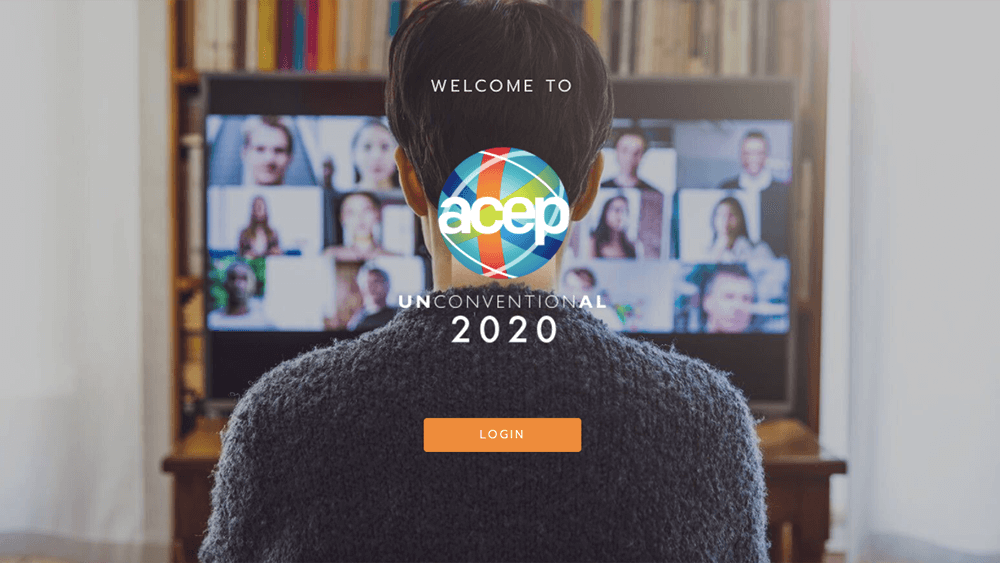
The American College of Emergency Physicians (ACEP) continues to offer content from the Unconventional 2020 virtual event on-demand.
